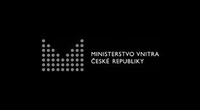 Hybrid warfare is a complex conflict strategy that combines conventional military operations with unconventional means and methods such as cyber warfare, disinformation, economic pressure, and political influence. This concept has become significantly relevant in the 21st century, as modern technologies and globalization have opened new possibilities for waging war.
Hybrid warfare is a complex conflict strategy that combines conventional military operations with unconventional means and methods such as cyber warfare, disinformation, economic pressure, and political influence. This concept has become significantly relevant in the 21st century, as modern technologies and globalization have opened new possibilities for waging war.
Hybrid warfare is characterized by a combination of various methods. On one hand, it includes conventional military actions such as the use of standard military forces, tanks, aircraft, and other traditional military means. On the other hand, it employs unconventional methods, including the involvement of irregular forces such as special units, mercenaries, or local insurgents. In recent years, prisoners have also been exploited in this way, being promised reduced sentences or even pardons in exchange for participating in combat.
Cyber warfare is another key element of hybrid warfare. Cyber attacks can include hacking into infrastructure, state systems, and critical networks. Disinformation campaigns, which spread false information and manipulate public opinion, are also part of this strategy. These campaigns often use social media and other communication channels to destabilize political systems. The problem is that the residents of the countries where disinformation campaigns are taking place often do not realize what is happening—they actively spread false information, often without verifying it, believing they are sharing the truth. The result of these campaigns is often societal polarization, loss of trust in public institutions, and a general disruption of democracy. Under the influence of disinformation campaigns in hybrid warfare, there is also an increase in violence—primarily verbal, which can easily escalate into physical violence.
Economic pressure is another important aspect of hybrid warfare. Sanctions and embargoes can be used to weaken the enemy, while market manipulation, commodity price influencing, and monetary policy can destabilize the target country's economy. This type of warfare also involves political and diplomatic pressure such as supporting separatist movements and political infiltration aimed at influencing the decision-making of political structures in countries.
Historical examples of hybrid warfare include the Russia-Ukraine conflict. The annexation of Crimea in 2014 is often cited as an example of hybrid warfare, where Russia used military forces, local militias, and intense disinformation campaigns. Moreover, even now, in addition to the actual military conflict, there is active propaganda and disinformation about the conflict being spread to surrounding countries. Another example is the fight against ISIS ("Islamic State"), where the conflict in Syria and Iraq involved a combination of conventional fighting, cyber warfare, and extensive ISIS propaganda campaigns.

The significance of hybrid warfare is enormous because it poses a challenge to modern states that traditional military doctrines and strategies do not always effectively cover. This type of conflict requires a multidisciplinary approach and close cooperation between military, civilian, and technological sectors.
Responding to hybrid threats involves several key steps. Strengthening cybersecurity is crucial, including investing in the protection of critical infrastructure and training cyber experts. Combating disinformation is also important, which includes educating the public, enhancing media literacy, and creating anti-disinformation teams. Finally, international cooperation is essential, including information sharing and coordination among allies and partners in combating hybrid threats.
Hybrid warfare is a dynamic and evolving concept that requires constant attention and adaptation to changing threats and technologies. Modern states must be prepared to respond to complex and multi-layered attacks that can come from various directions and employ different methods.
For E-Bezpečí
Kamil Kopecký
Palacký University in Olomouc































